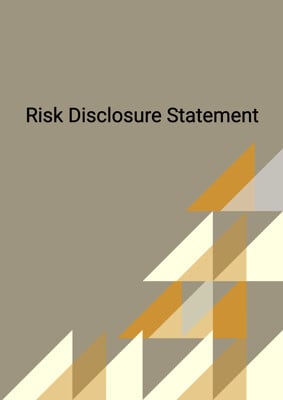How to Tailor the Document for Your Need?
01
Create Document
Fill in the details of the parties. You can click the "Fill with Member’s Information" button to complete it with information saved to your account.
02
Fill Information
Please fill in any additional information by following the step-by-step guide on the left hand side of the preview document and click the "Next" button.
03
Get Document
When you are done, click the "Get Document" button and you can download the document in Word or PDF format.
04
Review Document
Please get all parties to review the document carefully and make any final modifications to ensure that the details are correct before signing the document.
Document Preview
Document Description
The Stock Loan Agreement is a legal document that outlines the terms and conditions for borrowing and lending stock between two parties. The agreement is entered into by the lender, who is desirous of lending stock, and the borrower, who is desirous of borrowing stock. The agreement is important as it establishes the rights and obligations of both parties and ensures that the borrowing and lending transactions are conducted in a fair and transparent manner.
The agreement begins with an interpretation section, which defines key terms used throughout the document. This section ensures that both parties have a clear understanding of the terminology used in the agreement. The agreement then proceeds to outline the process of loans of stock, including the initiation of a loan, the terms of each loan, and the delivery of loaned stock to the borrower.
The agreement also addresses the issue of collateral, which is provided by the borrower to secure the loan. The collateral can be in the form of cash, stock, an unconditional letter of credit, or any other acceptable form of collateral. The agreement specifies the amount of collateral to be delivered by the borrower, which is determined as a percentage of the market value of the loaned stock. The lender has a security interest in the collateral and can use or invest the cash collateral at its own risk.
The agreement further covers the payment of loan rebate fees and loan fees. The loan rebate fee is payable by the lender to the borrower in respect of cash collateral, while the loan fee is payable by the borrower to the lender in respect of non-cash collateral. The amount of these fees is calculated based on the daily market value of the loaned stock and the cash collateral.
The agreement includes provisions for the termination of loans by both parties. The borrower can terminate a loan at any time by giving notice to the lender and tendering the loaned stock. The lender can also terminate a loan by giving notice to the borrower and requiring the return of the loaned stock. Upon termination of a loan, the lender's obligation is to return the collateral to the borrower.
The agreement addresses events of default, which allow either party to terminate the loans immediately. Events of default include the failure to deliver loaned stock or collateral, the failure to make required payments, the filing of bankruptcy or insolvency, and the suspension or expulsion from membership in a stock exchange or clearing house.
The agreement provides remedies for both the lender and the borrower in the event of default. The lender has the right to purchase a like amount of loaned stock and apply the collateral to the payment of such purchase. The borrower has the right to sell an appropriate amount of loaned stock and retain the proceeds of such sale. Both parties have security interests in each other's property to secure the payment of any deficiencies.
The agreement also includes representations and warranties by both parties, miscellaneous provisions, and a notice clause. It is important for both parties to carefully review and understand the terms and conditions of the agreement before entering into the stock borrowing and lending transactions.
How to use this document?
To use the Stock Loan Agreement, follow these steps:
1. Initiate a loan: Either the lender or the borrower can orally initiate a loan by agreeing on the terms of the loan. The terms should include the issuer of the stock, the amount of stock to be lent, the compensation rate, the collateral to be delivered, the duration of the loan, and the method of delivery.
2. Deliver loaned stock: The lender should deliver the loaned stock to the borrower by either delivering certificates representing the stock, crediting the borrower's account at the clearing house, or using any other agreed-upon method of delivery.
3. Deliver collateral: Concurrently with the receipt of the loaned stock, the borrower should deliver collateral to the lender. The collateral should be in an amount equal to the agreed percentage of the market value of the loaned stock. The borrower can deliver the collateral by delivering certificates representing the collateral, crediting the lender's account at the clearing house, or using any other agreed-upon method of delivery.
4. Pay loan rebate fee and loan fee: The lender should pay the borrower the loan rebate fee in respect of cash collateral, and the borrower should pay the lender the loan fee in respect of non-cash collateral. The amount of these fees should be calculated based on the daily market value of the loaned stock and the cash collateral.
5. Terminate the loan: Either party can terminate the loan by giving notice to the other party. The borrower should tender the loaned stock to the lender, and the lender should return the collateral to the borrower.
6. Address events of default: In the event of default by either party, the non-defaulting party can terminate the loans immediately. The lender can purchase a like amount of loaned stock and apply the collateral to the payment of such purchase. The borrower can sell an appropriate amount of loaned stock and retain the proceeds of such sale.
7. Review and understand the representations and warranties: Both parties should carefully review and understand the representations and warranties made in the agreement.
8. Follow the miscellaneous provisions: Both parties should comply with the miscellaneous provisions of the agreement, including the notice requirements.
It is important to consult with legal professionals to ensure compliance with applicable laws and regulations when using the Stock Loan Agreement.
Not the right document?
Don’t worry, we have thousands of documents for you to choose from:










